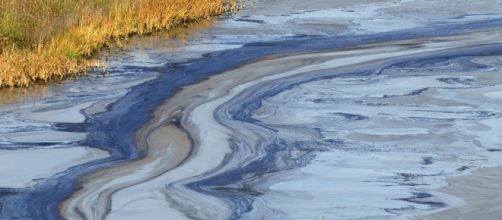From the BP oil spill that took place in the Gulf of Mexico in 2010 to the Exxon Valdez spill that blighted the Alaska coast around Prince William Sound in 1989, few disasters are harder to clean up that a massive amount of oil being accidentally dumped into the ocean. Cleanup crews use booms to contain the spill and then skimmers to clean it up. Chemicals are also used to break up the oil and biodegrade it. But the damage to the ocean environment and sea life can be devastating. Fortunately, a new solution may be at hand in the form of a high-tech sponge.
According to ZME Science, some researchers at the Argonne National Laboratory have developed a kind of sponge made of polyurethane foam coated with silane molecules. The substance has a tendency to absorb hydrocarbon molecules, making the sponges ideal for oil cleanup.
The beauty of these new sponges is that they can soak up oil, squeeze it out, and then be reused continuously without its absorbent properties being degraded. That property means that the sponges can be used to recover spilled oil to be reused. The sponges have been tested in a salt Water Tank with promising results. The researchers pumped oil into the tank, and the sponges were able to absorb the product very efficiently.
Of course, the real test will occur when the next major oil spill occurs.
Soaking up oil on the high seas will be a different proposition that a task in a salt water tank. Higher water pressure and inclement weather could impact real world results. Still, the sponges could prove to be another tool in the kit where it comes to handling Oil Spills, perhaps a game-changing one.
As long as the world is governed by a fossil fuel economy, oil spills remain a clear and present danger, even though safety features on offshore wells and supertankers have decreased their frequency and severity in recent years. Any technology that can be used to mitigate the effects of such spills and hasten their cleanup will be all for good for keeping the oceans clean.

